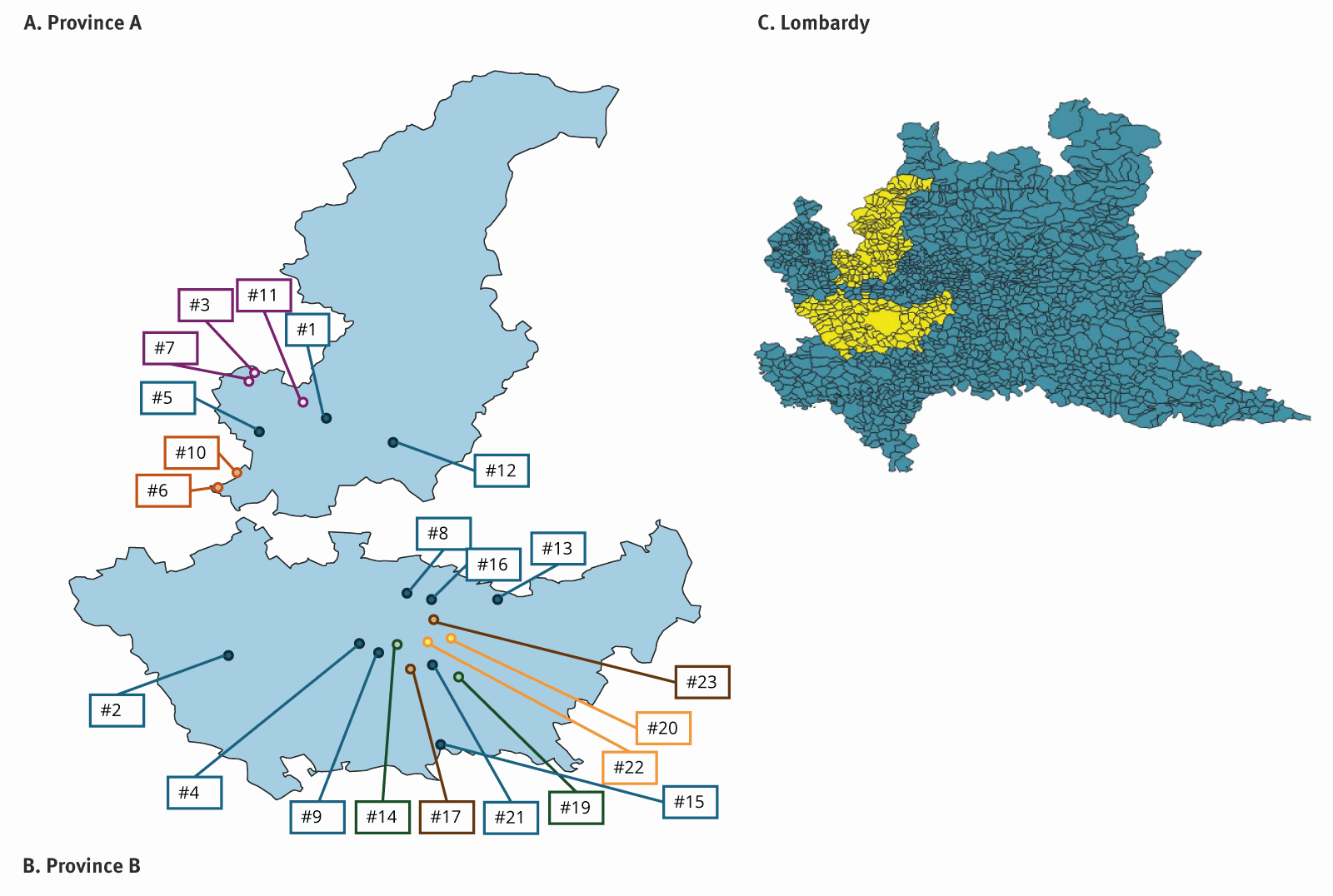A single measles virus lineage is now spreading locally in Milan, primarily among unvaccinated adults, challenging high regional vaccination rates and sparking fears of the disease becoming endemic again.
 Rapid communication: From multiple measles genotype D8 introductions in 2024 to sustained B3 local transmission in and around Milan, northern Italy, January to April 2025. Image Credit: Lightspring / Shutterstock
Rapid communication: From multiple measles genotype D8 introductions in 2024 to sustained B3 local transmission in and around Milan, northern Italy, January to April 2025. Image Credit: Lightspring / Shutterstock
Despite high vaccination coverage, Milan is experiencing a resurgence of measles, raising concerns about a potential return to sustained transmission. Moreover, 27 of the 32 confirmed measles cases in Milan and its surrounding areas in 2025 were traced back to a single virus lineage. In a recent study published in the journal Eurosurveillance, Italian researchers investigated how a single lineage of measles virus established itself in Milan and increased the risk of possible re-establishment of endemic transmission.
Measles
Measles is a highly contagious viral disease that can be prevented through vaccination. Despite successful immunization campaigns in Europe, recent years have seen an alarming rise in measles cases, particularly in countries like Italy. In 2024, outbreaks in northern Italy were triggered mainly by people bringing the virus from abroad. These outbreaks involved multiple strains of the virus, primarily genotype D8, but did not result in continuous local transmission at that time.
Now, experts are noticing a shift. Genotype B3, which has caused significant outbreaks in other regions, appears to be spreading locally within Italy. Although vaccination coverage in Lombardy, the region encompassing Milan, is notably high (96.06% for the first dose and 93.63% for the second, according to the study), pockets of susceptible individuals remain, especially among young adults who were not immunized in childhood. Scientists are trying to understand how a single genotype could lead to persistent transmission, and whether this indicates a more profound vulnerability in public health defenses.
 Geographical distribution of genotype B3 measles cases in Province A and Province B, northern Italy, January–April 2025 (n = 27). A colour pattern different from blue identifies a direct linkage between cases.
Geographical distribution of genotype B3 measles cases in Province A and Province B, northern Italy, January–April 2025 (n = 27). A colour pattern different from blue identifies a direct linkage between cases.
The current study
Between January and April 2025, researchers in northern Italy examined suspected measles cases reported across Milan and its surrounding areas. A total of 42 suspected cases were investigated. Local public health authorities collected demographic and clinical data using standardized forms and classified cases based on World Health Organization (WHO) definitions. Laboratory testing was conducted on throat swabs and urine samples using real-time reverse-transcriptase polymerase chain reaction (RT-PCR) to confirm measles virus infections.
The researchers then performed genetic analysis for the confirmed cases by sequencing the N-450 region of the measles virus nucleoprotein gene. This region is known for its genetic variability and is useful for identifying the virus genotype. All sequences were submitted to international surveillance databases such as GenBank and the WHO’s MeaNS2 platform.
The researchers also mapped the geographic spread of cases using location and symptom onset data. They looked for epidemiological connections between patients, including family ties, travel history, hospital exposure, and attendance at mass gatherings. Additionally, the team employed phylogenetic tree-building methods to assess the relatedness of virus samples. These methods enabled researchers to confirm the spread of a unique B3 lineage across different provinces.
Results
The study found that the measles virus genotype B3 was behind the growing number of measles cases in and around Milan during the first four months of 2025. Of the 32 confirmed measles cases, 27 were linked to this single genotype, pointing to sustained community transmission. This signified a marked shift from the previous year, when most measles cases were sporadic and travel-related, involving multiple virus strains without prolonged local spread.
The outbreak began with an imported case in early February. Within just two weeks, cases of locally acquired B3 measles began appearing, with no known connection to the initial traveler, suggesting ongoing community transmission.
By April, the B3 lineage was responsible for multiple small outbreaks across three provinces, with the most common viral strain appearing in more than 20 cases. Notably, only a handful of the cases were linked to international travel.
The most affected individuals were adults, with a median age of 36.5 years. Only seven people had been vaccinated, and only one had received the full two-dose series. Twelve patients required hospitalization, and two developed severe pneumonia. The virus also spread in hospitals and workplaces, underlining gaps in immunity among adults, including healthcare workers.
Furthermore, the genetic sequencing revealed that the B3 strain in Milan was nearly identical to a strain circulating in Morocco, where a large outbreak was ongoing. This strongly suggested the possibility that a single imported case introduced the virus into a susceptible population in Milan and its surrounding areas, where it spread unchecked among unvaccinated adults.
The researchers stated that the steady transmission over 12 weeks, along with clustered cases, suggested that this B3 strain could lead to the re-establishment of endemic measles in the region if left uncontrolled. Moreover, there was a high possibility of missed cases or undetected travel histories, which could obscure the full transmission chain.
Conclusions
Overall, the study highlighted the emergence of a single measles virus lineage that has rapidly spread through Milan and its surrounding areas, primarily among unvaccinated adults. The findings emphasized the risk of measles becoming endemic once again, despite high overall vaccine coverage. The researchers suggested that health authorities must close immunity gaps, especially in adults, and strengthen surveillance systems to detect and contain future outbreaks before they escalate quickly.
Journal reference:
- Fappani, C., Gori, M., Bianchi, S., Tieghi, L., Colzani, D., Senatore, S., Faccini, M., Pasutto, P., Imeri, L., Vezzosi, L., Castillo, D., Villa, S., Cereda, D., Gioacchini, S., Bucci, P., Fioravanti, R., D’Ugo, E., Baggieri, M., Magurano, F., & Amendola, A. (2025). From multiple measles genotype D8 introductions in 2024 to sustained B3 local transmission in and around Milan, northern Italy, from January to April 2025. Eurosurveillance, 30, 20. DOI:10.2807/1560-7917.ES.2025.30.20.2500315, https://www.eurosurveillance.org/content/10.2807/1560-7917.ES.2025.30.20.2500315